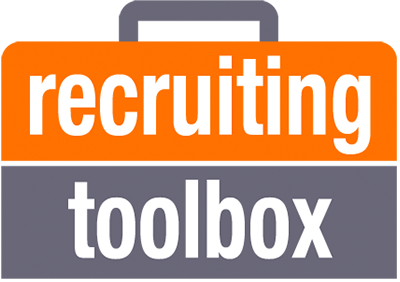Recruiting Toolbox Blog
How to Create a Culture Where Recruiting Is Everyone’s Job
Thanks to LinkedIn Talent Solutions editorial team for writing up a summary of my (#1 rated!) talk at the LinkedIn Talent Connect conference in New York last month. Check out this great overview of a different way to frame up the role of the hiring manager in your org, and some specific best practices to create a culture that lives the "hiring is a team sport" philosophy, where hiring managers are expected to - and rewarded for - being so much more than a customer of the TA function.

“Hiring is a team sport,” John Vlastelica, the CEO of Recruiting Toolbox, told a group of talent acquisition leaders at LinkedIn’s recent Talent Connect conference.
Why hiring managers need to partner with recruiters, and how to get them more involved, was the focus of two breakout sessions John conducted at the conference. About 200 participants listened to his views and had the opportunity to brainstorm and share their ideas.
Who gets the top talent? Talent champions
It’s a timely issue. When it comes to recruiting, too many hiring managers still consider themselves “customers of recruiting” and therefore believe they can sit back while recruiters do all the work.
That attitude no longer fits reality. Candidates, especially those who are highly in-demand, demand “talent champions,” hiring managers who are actively engaged in bringing them on board, John says.
At Talent Connect, John cited an example of a candidate who took a pass on offers from several well-known tech companies. Instead, the candidate chose to join a lesser-known employer who offered a lower salary. The reason: During the recruiting process, the candidate’s would-be manager made extra efforts to establish ties, including introducing him to the team and offering him the opportunity to hear the CEO speak.
In fact, hiring managers have a key role to play at various points along the recruitment journey, including sourcing and engaging with candidates and then selling them on the merits of the company and the role. Not only that, but they have a vested interest in being active participants. The more involved hiring managers are, the greater the chances they’ll be able to hire quality employees from diverse backgrounds at a faster pace.
“Can you put a cost or a consequence to bad hiring manager engagement?” John asks. “The answer is ‘yes.’ Hiring managers who are less engaged have fatter funnels, meaning they have to talk to way more people to make a hire, than hiring managers who are engaged. Talking to more candidates, having more phone screens, more interviews — that’s expensive.”
Creating a culture of recruitment ownership
Shifting the status quo is not easy. It requires creating an organizational culture where recruiting is part of everyone’s job. This is a mindset popular with startups and was the philosophy of companies like Amazon, one of John’s previous employers. Unfortunately, a lot of startups lose that mentality as they scale up.
TA leaders should take the lead in fostering a culture of recruitment ownership, John says. “This is one of the single most strategic things a TA leader can do,” he explains. “It’ll be your legacy — more so than the EVP you build or the new career site you implement or new tech you introduce.”
In that kind of culture, hiring managers know what’s expected of them. They should receive regular feedback to ensure they’re held accountable and their involvement in hiring efforts should be considered during performance reviews, John says.
Ideas from the crowd: sourcing jams, coffee chats, and more
Some talent professionals are already trying to change the behavior of hiring managers and turn them into talent champions. During his Talent Connect sessions John divided participants into groups of 10, each group tasked with focusing on a particular aspect of recruiting. The groups then brainstormed and shared best practices for enlisting the support of hiring managers. Among their ideas:
Hold sourcing jams. Sourcing jams — recruiting events where hiring managers source talent and share referrals — have long helped employers source quality candidates from diverse backgrounds. Participants in John’s sessions recommended that hiring managers and recruiters hold their own version of sourcing jams where they pop open their laptops or screen-share and source candidates collaboratively.
This approach has multiple benefits. Not only will hiring managers help source talent, but they’ll gain a better understanding of what recruiters do, the challenges of finding and getting responses from hard-to-recruit talent, and what the available talent pool really looks like.
Ask hiring managers to help build up your talent pool. A common theme that came up during the sessions was the importance of getting hiring managers involved in candidate outreach, even before there’s a role to be filled. Hiring managers should be encouraged to schedule periodic coffee chats or informal meetings with potential future hires.
“It’s not about selling to them, or interviewing them,” John says of these in-person or virtual coffee chats. “It’s more about learning what’s important to them.”
Why is this helpful? “The hiring managers that get the best talent,” John says, “don’t wait for a req to open up to begin their recruiting work. Great hiring managers live the ‘always be recruiting’ approach.”
Have managers, not HR, solicit employee referrals. Employee referral programs, where workers are rewarded for successfully recruiting hires, are traditionally run by HR or talent acquisition departments.
How about having managers ask their team members for referrals instead?
This is a common practice at startups, where executives often challenge their team to recommend candidates. Adopting this approach reinforces the message that recruiting is considered everyone’s responsibility.
“Posters highlighting hiring needs and referral bonuses are not enough,” John says. “Teams that get the best talent actively solicit leads from their employees.”
Reward good behavior. One participant said their company is tracking hiring managers’ level of engagement and is rewarding them for good work.
John stresses the importance of rewarding hiring managers who partner well with recruiters. Among his recommendations: Recruiters might send positive feedback to hiring managers’ bosses around performance review time. Or they might write positive recommendations on LinkedIn for hiring managers who drove great recruiting results.
“Culture for me is about the behaviors you reward and the behaviors you punish,” John says. “We have to partner with the business to create a culture that rewards hiring managers for being great hiring managers.”
Companies that live this culture of recruiting see hiring managers as partners, not customers. Wouldn’t it be amazing then if recruiters had a way to give hiring managers feedback? In an upcoming Talent Blog post, John will discuss the importance of surveying recruiters about the hiring managers with whom they work and he’ll share 10 questions your surveys might include.
Download the Hiring Manager Maturity Model
If you’d like to dig deeper into what makes great hiring managers great and learn more about how you can create a culture of recruiting, check out this post on the Recruiting Toolbox Hiring Manager Maturity Model.
